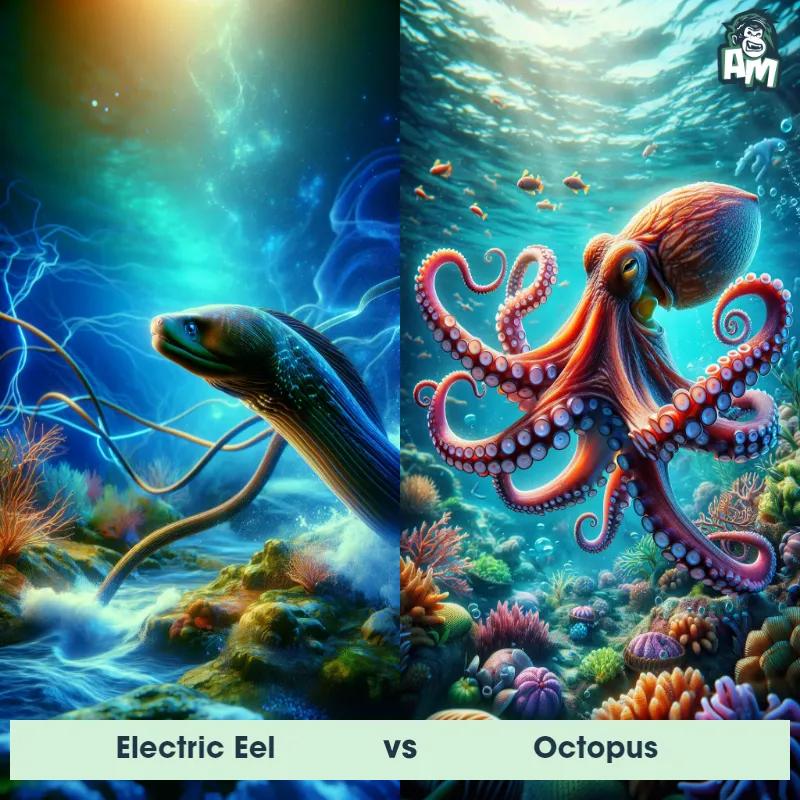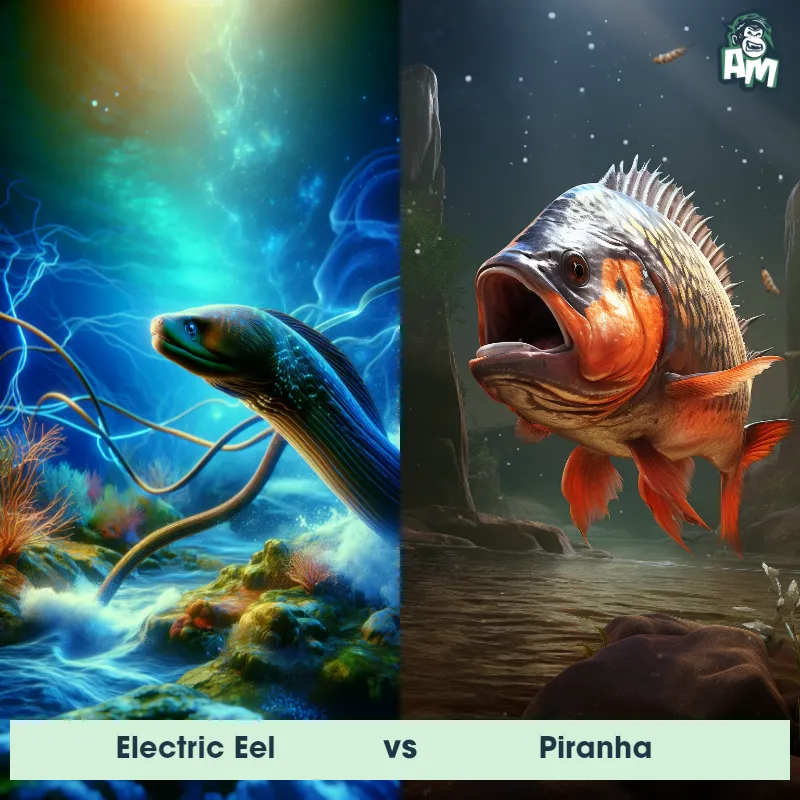The Electric Eel
The Electric Eel, also known as Electrophorus electricus, is a fascinating creature found in the freshwater rivers and streams of South America. Despite its name, the Electric Eel is not truly an eel but rather a type of fish. It has a long, slender body that can grow up to 8 feet in length and weigh around 44 pounds. What sets this animal apart is its ability to generate electric shocks, which it uses for hunting prey, defense, and communication. Its body is covered in an olive-green to brownish-black skin, and it has a narrow head with small eyes and a large mouth filled with sharp teeth. This unique species is well-known for its electrogenic organs, which can produce up to 600 volts of electricity.

| Electric Eel | |
|---|---|
| Size | Up to 8 feet (2.4 meters) |
| Weight | Up to 44 pounds (20 kilograms) |
| Speed | Speed: 0.6 mph (0.97 km/hr) |
| Key Strength | Electric shocks of up to 600 volts |
| Biggest Weakness | Vulnerable to physical attacks |
| Scientific Name | Electrophorus electricus |
| Family | Electrophoridae |
| Habitat | Freshwater |
| Geography | Amazon and Orinoco River basins in South America |
| Diet | Fish, amphibians, and small mammals |
| Lifespan | 15 years - 22 years |

The Electric Eel
The Electric Eel, also known as Electrophorus electricus, is a fascinating creature found in the freshwater rivers and streams of South America. Despite its name, the Electric Eel is not truly an eel but rather a type of fish. It has a long, slender body that can grow up to 8 feet in length and weigh around 44 pounds. What sets this animal apart is its ability to generate electric shocks, which it uses for hunting prey, defense, and communication. Its body is covered in an olive-green to brownish-black skin, and it has a narrow head with small eyes and a large mouth filled with sharp teeth. This unique species is well-known for its electrogenic organs, which can produce up to 600 volts of electricity.
Fun Fact: The Electric Eel is a master of disguise as it can change its color to blend in with its surroundings, making it difficult for predators to spot them.
| Electric Eel | |
|---|---|
| Size | Up to 8 feet (2.4 meters) |
| Weight | Up to 44 pounds (20 kilograms) |
| Speed | Speed: 0.6 mph (0.97 km/hr) |
| Key Strength | Electric shocks of up to 600 volts |
| Biggest Weakness | Vulnerable to physical attacks |
| Scientific Name | Electrophorus electricus |
| Family | Electrophoridae |
| Habitat | Freshwater |
| Geography | Amazon and Orinoco River basins in South America |
| Diet | Fish, amphibians, and small mammals |
| Lifespan | 15 years - 22 years |
Electric Eel Matchups
We use AI to simulate matchups between the Electric Eel and other animals. Our simulation considers size, strength, and natural predatory behaviors to determine the most likely outcome.
Electric Eel: Diet, Predators, Aggression, and Defensive Behaviors
What do Electric Eels eat?
Electric Eels primarily feed on fish, although they may also consume small mammals, amphibians, and birds. They use their electrical shocks to immobilize their prey before consuming it.
Do Electric Eels have any predators?
Adult Electric Eels do not have many predators due to their powerful electrical abilities. However, they may sometimes fall prey to larger predators like caimans and jaguars, especially when they are young or injured.
Are Electric Eels aggressive?
Electric Eels are not typically aggressive towards humans, but they can become aggressive if they feel threatened or provoked. They may deliver a powerful electric shock as a means of defense.
Do Electric Eels fight with other animals?
Electric Eels are solitary creatures and do not engage in fights with other animals unless they feel threatened or are searching for food. Their electric shocks can be used both for hunting and self-defense.
How do Electric Eels defend themselves?
Electric Eels use their strong electric organs to defend themselves from predators or threats. They can generate electrical discharges of up to 600 volts, which can be used to stun or deter potential attackers.
What is the Electric Eel's biggest weakness in a fight?
Despite their powerful electric abilities, Electric Eels have a limited range with their electric shocks and need to make physical contact with their target to deliver the shock effectively. This can leave them vulnerable if their opponent is able to avoid direct contact.
Fun Fact: One astonishing fact about Electric Eels is that they produce electric discharges to navigate and locate their prey in murky waters, acting as their own "living GPS system."
Fun Fact: Unlike most fish species, which rely on gills to breathe, Electric Eels must regularly surface to get oxygen to meet their metabolic needs, as they possess a modified and very vascularized respiratory organ called the "labyrinth organ," which functions as a lung.















